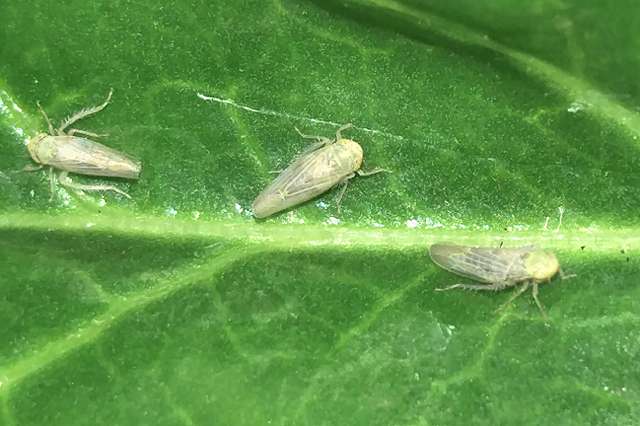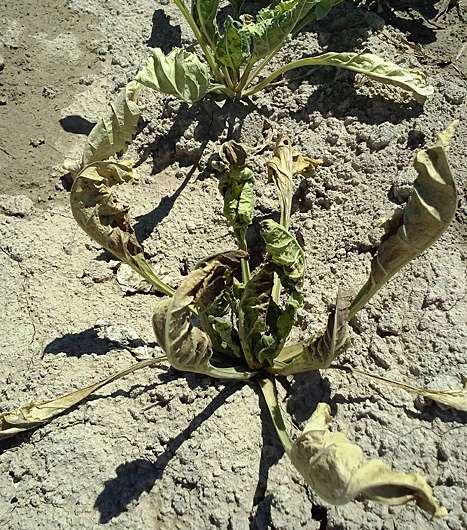Breeding sugar beets for better resistance to curly top virus

The sugar beet curly top virus could meet its match in new sugar beet varieties derived from KDH13, a germplasm breeding line developed by Agricultural Research Service (ARS) researchers for resistance to the disease-causing pathogen.
Transmitted by small insects called beet leafhoppers, the curly top virus courses through the phloem of susceptible beet plants, wreaking cellular havoc that can manifest as yellow, inwardly curled leaves; stunted growth; and other telltale symptoms. Severe outbreaks of curly top disease can reduce sugar beet yields 30 percent or more.
Spraying insecticides can prevent leafhoppers from transmitting the virus to plants while feeding, but the preferred approach is to plant sugar beet varieties that naturally resist the pathogen, notes Imad Eujayl, a molecular biologist with ARS's Northwest Irrigation and Soils Research Lab in Kimberly, Idaho.
Fortunately, a new germplasm line is now being used by beet breeders and seed companies as a source of resistance genes that can be bred into the commercial varieties now grown, shoring up the low levels of tolerance to the virus in existing germplasm.
Eujayl, together with ARS plant pathologist Carl Strausbaugh and members of the Beet Sugar Development Foundation, developed, tested, and released the new genetic stock line—KDH13—as part of an ongoing sugar beet improvement program at the Kimberly lab. A cornerstone of that program involves the use of molecular markers and genetic mapping techniques to identify resistance genes and other economically important traits, including improved storage quality, better tolerance to drought and frost, and increased sugar content.

KDH13 was derived from the use of "gynogenesis," a tissue-culture technique in which the new sugar beet line got its start from the regenerated egg-cell tissue of a single, unfertilized female parent plant known to be resistant to the virus. In greenhouse and nursery tests, mature plants of KDH13 outperformed Hilleshog PM90, a top resistant cultivar used for comparison.
Technical details about KDH13, including its growth characteristics and availability as seed, were published in the January 2016 issue of the Journal of Plant Registrations.
"Ultimately, the new genetic and pathogen knowledge that's generated will allow our stakeholders to reduce losses by improved disease management," the researchers say.

More information: Imad Eujayl et al. Registration of Sugarbeet Doubled Haploid Line KDH13 with Resistance to Beet Curly Top, Journal of Plant Registrations (2016). DOI: 10.3198/jpr2015.09.0055crgs
Provided by Agricultural Research Service




















